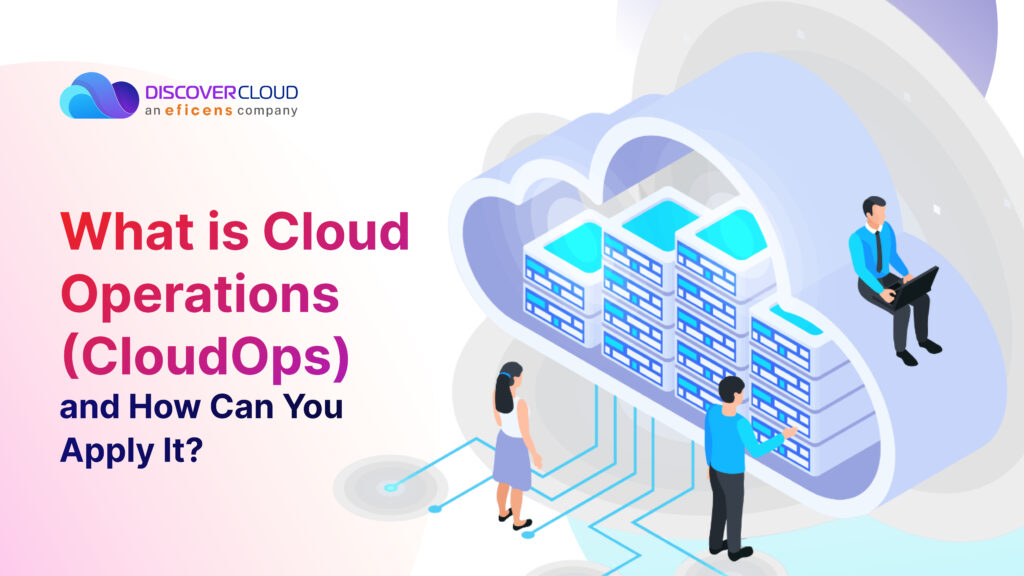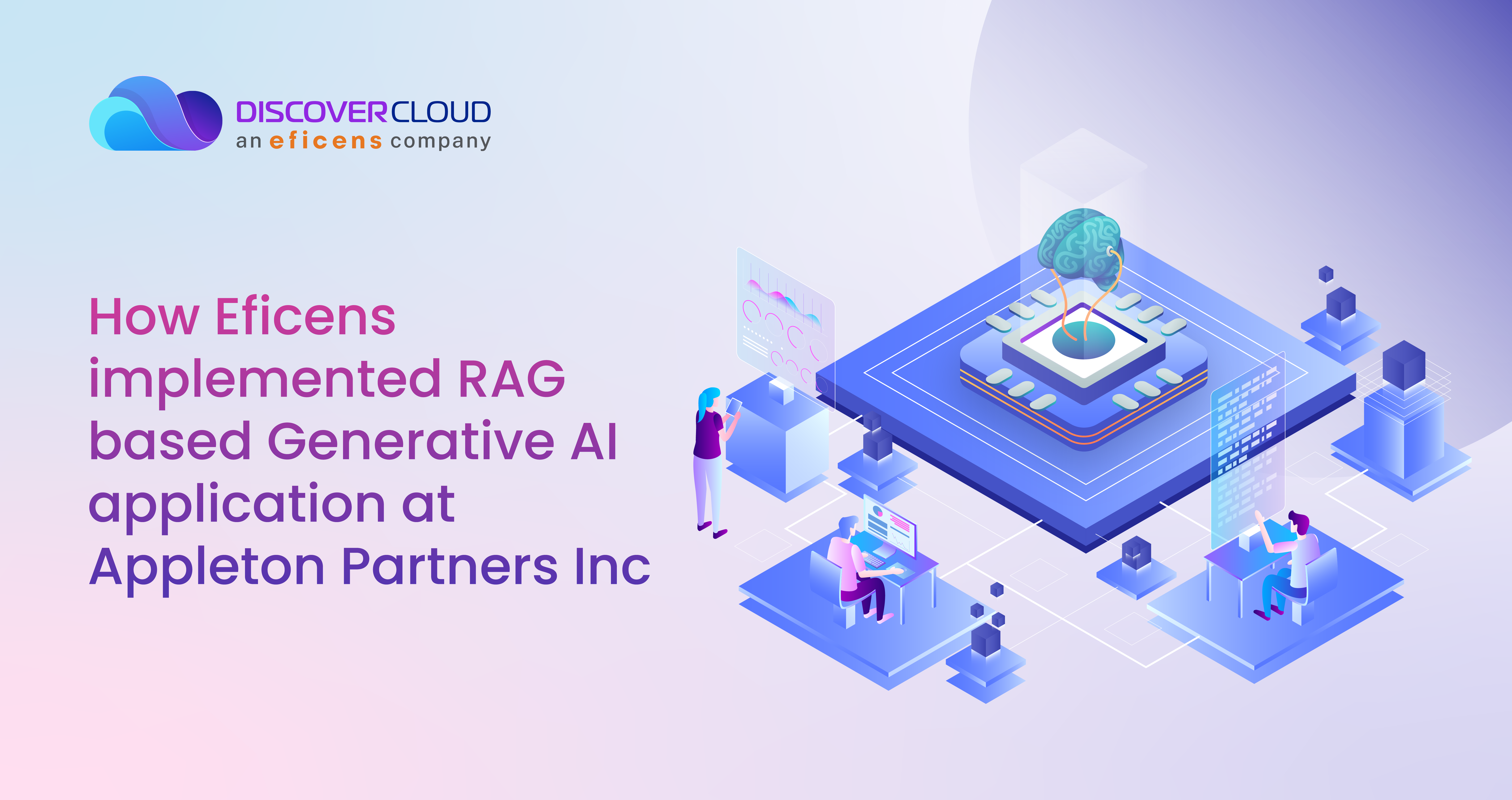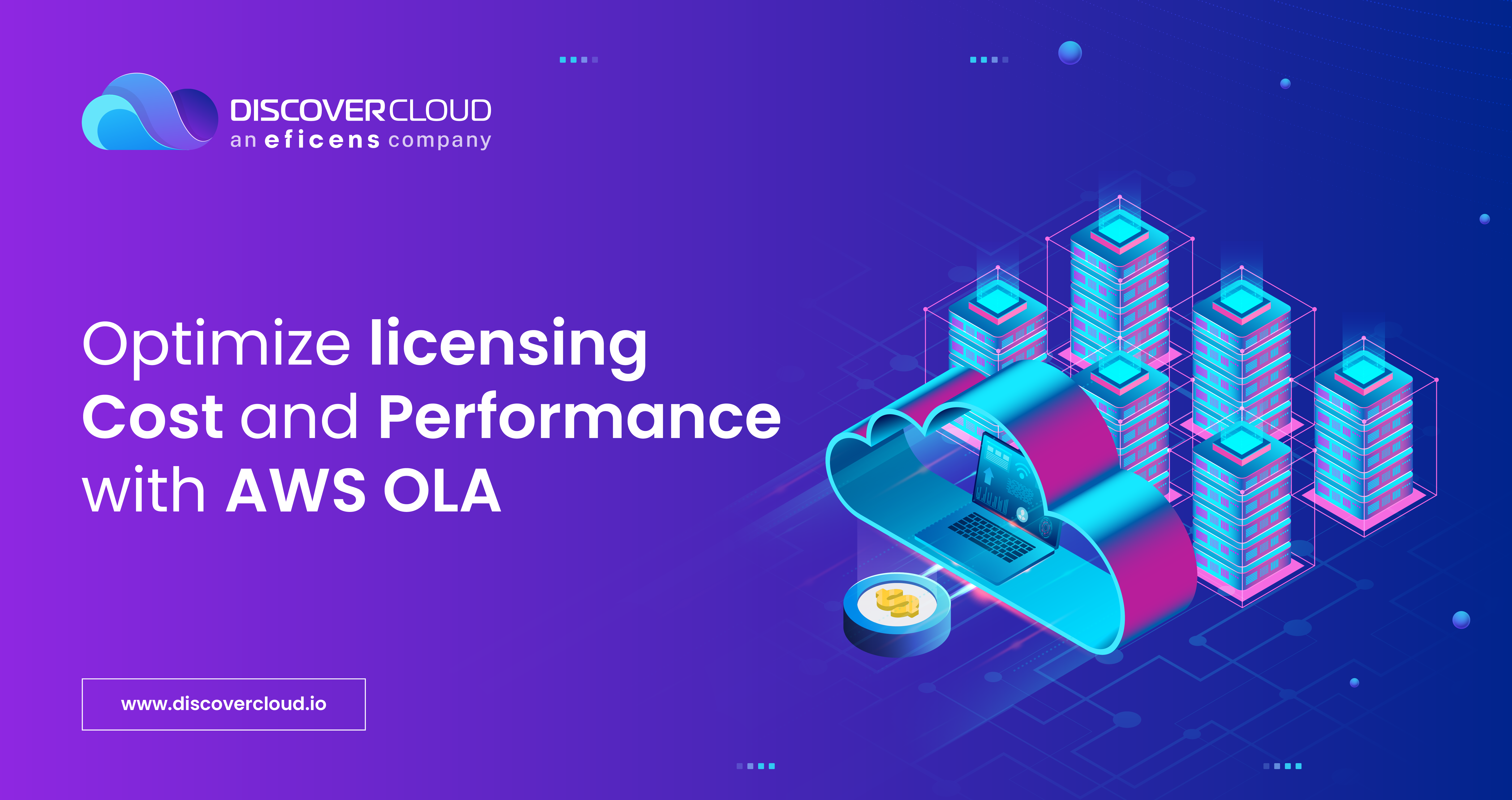Navigating the digital landscape can be complicated, but embracing it is essential for businesses in the competitive environment. In fact, it is predicted that 85% of organizations will implement a cloud-first principle by 2025. And this is where CloudOps, a key component of managing and optimizing cloud environments, takes the spotlight.
Cloud Operations (CloudOps) offers a new way to manage cloud landscapes and contributes to digital transformation. So, let’s get into the details about CloudOps and explore how you can leverage it.
What is CloudOps
CloudOps, or Cloud Operations, is a fusion of processes, practices, and tools to effectively deliver and manage cloud services within an organization. It goes beyond merely managing operational workloads and focuses on fostering an innovation-centric mindset to unlock new opportunities in the ever-evolving digital landscape.
At its core, CloudOps is about managing the delivery, tuning, optimization, and performance of workloads and IT services running in various cloud environments, such as multi-cloud, hybrid cloud, data center, and edge computing. The responsibilities involved in CloudOps often include monitoring and maintaining the functionality, security, and accessibility of software and services hosted on cloud infrastructure.
The Significance of CloudOps
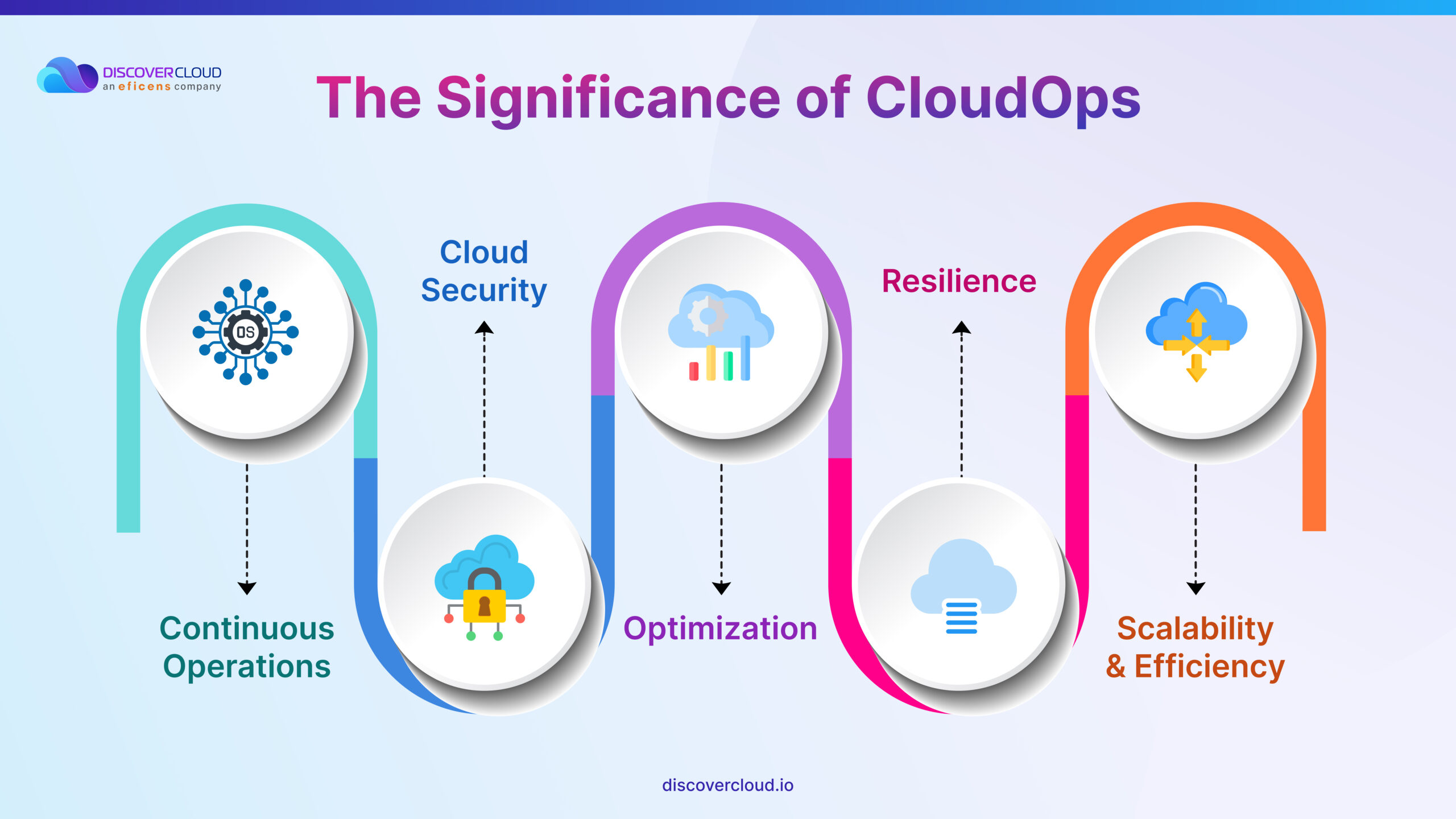
To understand the unique significance of CloudOps, let’s break it down into a structured analysis covering its five key benefits:
Continuous Operations
CloudOps delivers seamless, uninterrupted functioning of cloud services by diligent monitoring and maintaining the health of systems. This contributes to organizations’ strong and dynamic digital presence.
Cloud Security
It ensures your cloud ecosystem’s safety by managing access controls, data protection, and risk assessment. CloudOps strengthens the secure pathways, allowing you to concentrate on core business objectives with peace of mind.
Optimization
The fusion of processes and practices in CloudOps supports the management and optimization of cloud resources. It balances performance with cost, which is essential for a good return on investment.
Resilience
Amidst unexpected technical glitches, CloudOps maintains robust recovery mechanisms, significantly minimizing downtime. This adaptability helps businesses swiftly pick up the pace after hiccups.
Scalability & Efficiency
CloudOps rules when it comes to building cloud-based infrastructures that can effortlessly scale as per business demands. It efficiently manages resources to meet changing market needs, providing a competitive edge.
By embracing CloudOps and its innovative facets correctly, you’re optimizing your cloud journey while also tapping into exponential value and growth opportunities. After all, who wouldn’t want to turn their complex cloud wilderness into their digital playground?
Key Functions of CloudOps
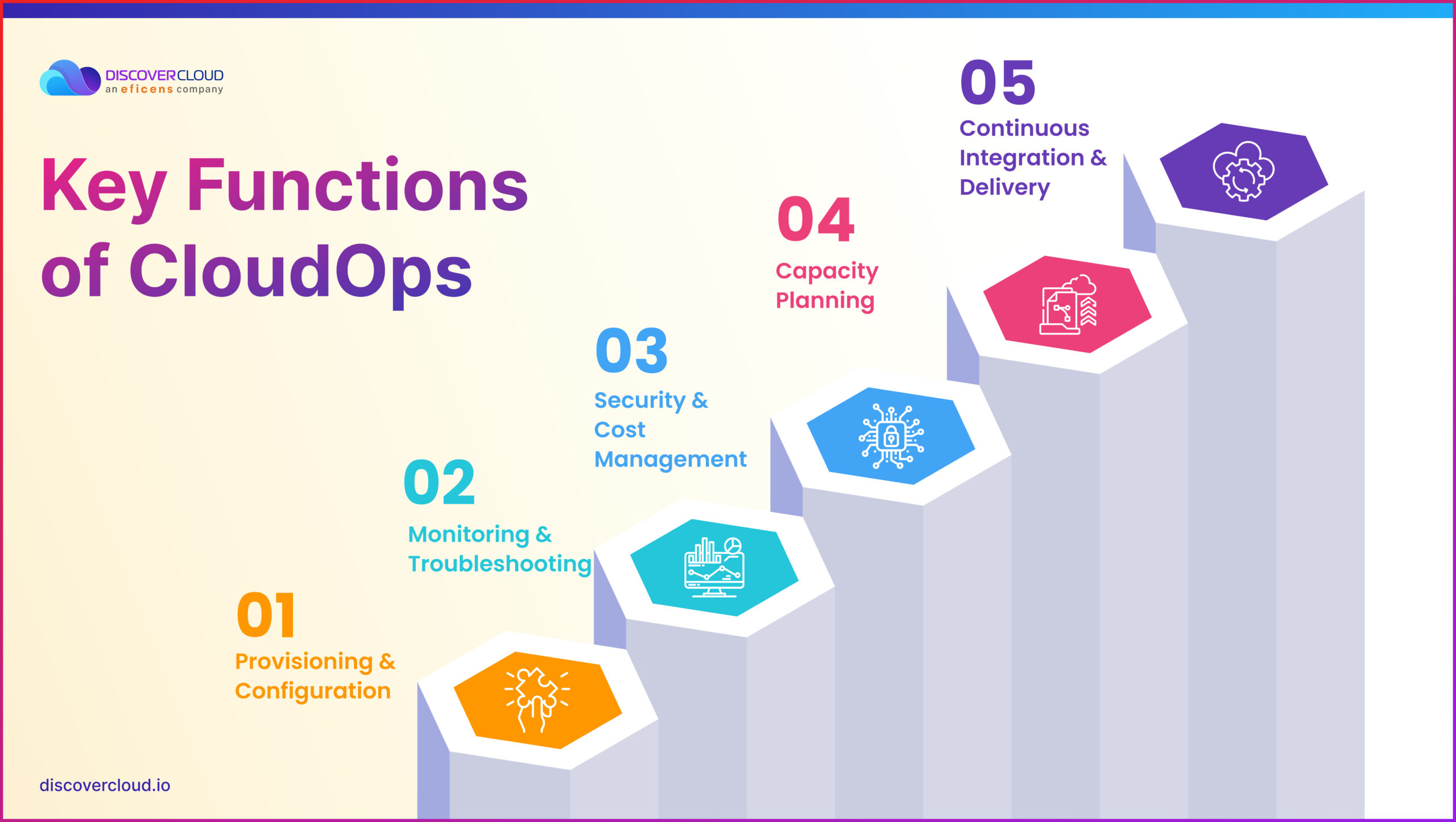
CloudOps is a lot more than just the day-to-day management of cloud services. It plays a strategic role in making sure services are always available, security measures are top-notch, processes are automated, and integrations happen smoothly. Let’s get into its core functions:
Provisioning & Configuration
In the dynamic digital world, businesses need to quickly set up and adjust cloud-based resources to meet their evolving needs. CloudOps plays a vital role in fine-tuning the allocation of resources, ensuring smooth operations that cater to your business’s demands.
Monitoring & Troubleshooting
Staying ahead in the game means identifying potential challenges and rectifying them promptly. By continuously overseeing your cloud infrastructure, CloudOps detects issues and resolves them, keeping your services running smoothly.
Security & Cost Management
Balancing top-tier security while optimizing expenditure is crucial for businesses. CloudOps offers robust security measures that protect sensitive data and applications. Simultaneously, it also helps identify cost-saving opportunities, ensuring your cloud environment remains budget-friendly.
Capacity Planning
As businesses grow or adapt to changing markets, understanding how to scale cloud resources intelligently is essential. CloudOps facilitates this by analyzing your current and future needs and assisting in making informed decisions.
Continuous Integration & Delivery
To deliver high-quality software faster and more frequently, CloudOps adopts the principles of DevOps and automates the entire software development lifecycle. This enables seamless integration and delivery of code changes, reducing errors and improving customer satisfaction.
Managing Cloud Operations: The Strategic Approach
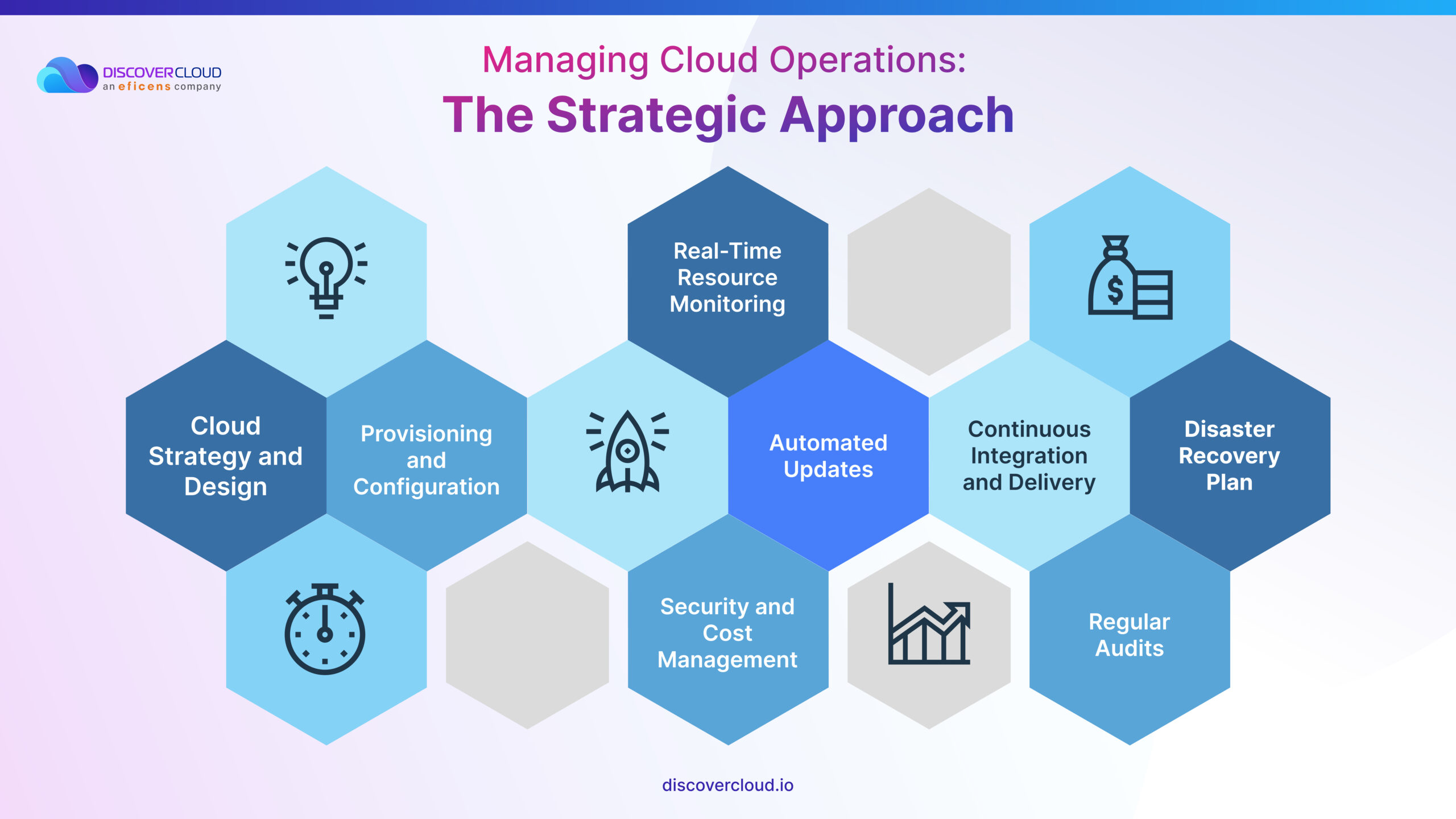
Good management of cloud operations involves thorough planning, solid processes, and the use of modern tools that make tasks easier. This can be achieved by in-house experts if any, or specialized agencies that provide professional cloud operations support and managed services. A top-tier CloudOps management strategy includes:
Cloud Strategy and Design
Before deploying any cloud services, it is important to have a clear vision of your business goals and how the cloud can help you achieve them. A CloudOps management strategy involves designing a cloud architecture that meets your technical, functional, and budgetary requirements. The architecture defines how the resources are pooled, shared, and delivered (IaaS, SaaS, or PaaS) across a network, using technologies such as virtualization, automation, and orchestration.
Provisioning and Configuration
Once you have a cloud strategy and design, you need to set up and adjust your cloud resources according to your needs. A CloudOps management strategy involves fine-tuning the allocation of resources to ensure smooth operations that cater to your business demands.
Real-Time Resource Monitoring
Continuous monitoring of cloud resources helps businesses make data-driven decisions that boost efficiency. By closely following resource usage, CloudOps helps identify areas for improvement and execute optimizations on the fly. Monitored resources may include servers, storage, databases, networking, software, analytics, and artificial intelligence.
Automated Updates
Outdated systems increase vulnerability and limit performance. A management methodology that implements automated patching and updates ensures your cloud services stay up-to-date and maintain optimal performance.
Security and Cost Management
Balancing top-tier security while optimizing expenditure is crucial for businesses. A strategic application of safety tools and techniques like encryptions, firewalls, process monitoring, and access management helps protect sensitive data and applications. Simultaneously, it also helps identify cost-saving opportunities and eliminates financial damages caused due to security breaches.
Continuous Integration and Delivery
To deliver high-quality software faster and more frequently, a CloudOps management strategy adopts the principles of DevOps and automates the entire software development lifecycle. This enables seamless integration and delivery of code changes, reducing errors and improving customer satisfaction.
Regular Audits
Periodic checks on your cloud infrastructure give a clear understanding of its health, security, and overall performance. An effective CloudOps management approach involves frequent audits and vulnerability assessments that identify potential points of weak security or other areas of improvement. This ensures your business continues to thrive in the cloud safely.
Disaster Recovery Plan
Preparing for unforeseen challenges reduces downtime and minimizes impacts on your business operations. A thoughtful CloudOps management strategy includes disaster recovery plans that are blueprints to get you back on track quickly when issues arise.
If that looks complicated, don’t hesitate to take help! Remember, accelerator tools like DiscoverCloud’s SAPAssist, Traverse, and Trekora are here to support your CloudOps journey. Backed by seasoned experts, these accelerators simplify migration, provide deep insights, and help manage costs, making them a true asset for businesses navigating the cloud.
Overcoming Obstacles: Tackling CloudOps Challenges
Embarking on your quest to conquer the cloud can sometimes feel like navigating a maze, with its fair share of twists, turns, and roadblocks. Rest assured, with the right strategy and a bit of insight, you can skillfully tackle these challenges and prevail. So, let’s look at the common pitfalls in CloudOps and how to overcome them:
Security Concerns
Keeping your cloud systems safe is a top priority and can be achieved with a strong focus on access controls, data protection, and risk assessment. By employing robust security measures, your digital kingdom stays guarded from threats. However, this crucial area is also highly complex and sensitive, and that’s why it is best left to managed cloud service agencies with specialization in SecOps.
Spiraling Costs
Cloud costs can be a slippery slope without proper optimization. A dependable solution like DiscoverCloud’s Trekora can help scrutinize your cloud expenditure, offering cost-saving recommendations and transparency within minutes.
Compliance Issues
Compliance keeps businesses in line with industry standards and regulations. Proper audits and a proactive approach to compliance can steer your cloud journey in the right direction. Experienced professionals or CloudOps agencies can come in handy again.
Immature Processes & Lack of In-House Expertise
Evolving your cloud processes takes time and effort, and your in-house talent may not be skilled or equipped enough to manage it. By partnering with a cloud expert like DiscoverCloud, you can fine-tune your approach, enjoying a smooth and efficient transition to the cloud.
Multicloud Environment Complexity
Juggling multiple cloud environments can be tricky unless you have the right workload discovery and visualization tools that provide a clear overview of your cloud system. For example, managing multi-cloud environments becomes a breeze with Traverse as it provides real-time data insights and in-depth diagrams for AWS Cloud.
Talent Shortages
Finding the right cloud experts can be challenging, but fear not! As we discussed, engaging with leading cloud solution providers like DiscoverCloud can complement your team, bringing years of experience and an arsenal of modern tools. Let’s understand this in more detail.
Why DiscoverCloud?
As we have discussed, partnering with DiscoverCloud, an expert cloud services provider, can be an absolute game-changer for your company amidst all the complexities and challenges. But what’s so special about DiscoverCloud?
At DiscoverCloud by Eficens, we thrive in providing tailor-made CloudOps solutions that transform all hurdles into growth opportunities. DiscoverCloud’s unique online platform harbors innovative accelerators that provide quick insights into your cloud system without costing you a dime! Moreover, these powerhouses are backed by their experts who have decades of cloud management experience ready for you.
Whether it’s about utilizing SAPAssist to simplify complex SAP migrations, using Traverse for workload discovery and real-time data insights, or deploying Trekora for cost optimization, DiscoverCloud’s unique accelerators and experts will pave the way for safe and efficient cloud operations.
New Opportunities in CloudOps
CloudOps is not just about keeping up with the latest developments perfectly. You need to prepare for the future of the cloud to maintain a competitive edge! So, for those eager to stay ahead of the curve, here are three key opportunities to watch in the sphere of CloudOps:
AIOps
Artificial Intelligence (AI) and Machine Learning (ML) are game-changers, making their mark on CloudOps. Imagine effortlessly monitoring, analyzing, and troubleshooting complex cloud environments, detecting and resolving issues in the blink of an eye, and optimizing performance and costs. AIOps is integrating with CloudOps to make that a reality, taking cloud operations to the next level.
Serverless
Ever imagined a world where you could forget the hassle of managing infrastructure and just focus on crafting code? That’s the beauty of serverless computing! It enables CloudOps teams to minimize operational overhead, scale resources on-demand, and pay only for what they use. This modern approach to cloud computing can dramatically redefine your cloud experience.
Multi-cloud and hybrid-cloud
As the cloud landscape continues to evolve, it’s becoming increasingly essential for enterprises to embrace more flexible and robust architectures. Multi-cloud and hybrid cloud scenarios offer an enticing blend of on-premises and cloud resources from various providers. This empowered approach presents opportunities to boost flexibility, resilience, and innovation while tackling complexity, security, and governance challenges head-on.
In a world where ‘cloud-first’ is becoming the new norm, harnessing these opportunities can be the key to staying ahead and unlocking your next level of growth.
Wrapping Up
Change isn’t coming; it’s here! You must leverage CloudOps now to maximize returns from your cloud investments and advance confidently into your digital future. With the right strategic approach, management tools, and expert partners on your side, you can navigate the challenges and decode the true potential of the cloud. Also, remember to keep an eye out for the latest CloudOps trends so you can stay ahead of your competition. All the best!
